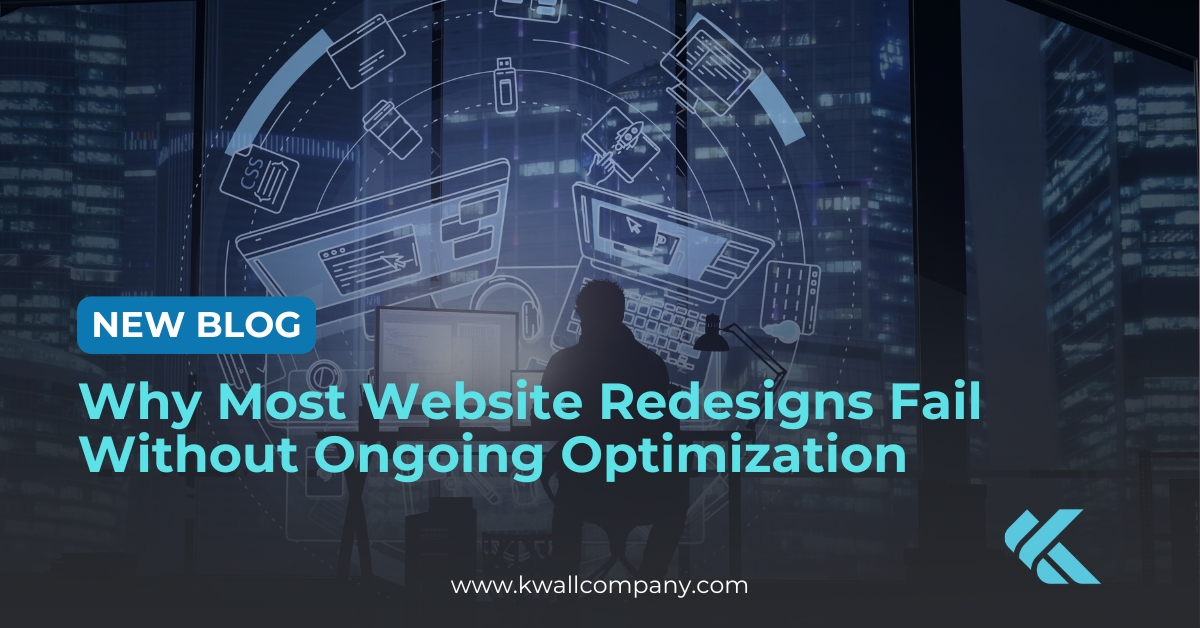
A website redesign is a significant investment, often viewed as a one-time project to refresh a brand’s online presence. However, many organizations make the mistake of assuming that once the new design is launched, their work is done. Most website redesigns fail without ongoing optimization is crucial to understand because, without a long-term optimization strategy, even the most beautifully designed websites can fall short of delivering meaningful results.
Post-Launch Optimization: Overcoming Common Pitfalls for Lasting Impact
- Unrealistic Expectations Post-Launch. After launching a new website, many teams expect immediate increases in traffic and conversions. While redesigns are crucial for improving user experience and aesthetics, they are only the starting point. Without a comprehensive post-launch strategy, engagement can quickly stagnate or even decline.
- SEO Disruptions & Traffic Loss. A website redesign can unintentionally harm your SEO rankings. Changes to URL structures, metadata, or content hierarchy may result in broken links and lost search visibility. Additionally, without a plan for fresh content and regular SEO updates, your website may struggle to maintain its ranking position.
- Ignoring User Behavior & Analytics. A successful website doesn’t just look good—it also meets the needs of its users. Many organizations launch redesigned websites without tracking essential user experience (UX) metrics or setting clear KPIs. Without insights into how users engage with the site, improvements are based on guesswork rather than data.
- Performance & Accessibility Monitoring. A visually appealing website is not enough if it doesn’t perform well. New designs often come with performance and accessibility challenges, such as slow load times, unoptimized images, or bloated code. Additionally, failure to meet WCAG (Web Content Accessibility Guidelines) standards can result in lost engagement and potential legal issues.
By implementing a strategy of continuous optimization, why most website redesigns fail without ongoing optimization becomes clear. Your website will not only stay relevant but will also evolve into a more powerful tool for driving traffic, engagement, and conversions.
Post-Launch Success: Optimizing User Experience, SEO, Performance, and Accessibility
- Continuous Monitoring, A/B Testing, and Iterative Design. Develop a post-launch optimization roadmap that includes ongoing monitoring, A/B testing, and iterative design improvements. This will help refine the website’s functionality and user experience over time, ultimately boosting conversions and engagement.
- Ensuring Smooth Migration and Sustained Search Engine Visibility. Conduct thorough SEO audits before, during, and after the redesign to ensure smooth migration. Implement proper redirects, and continuously update content to maintain or improve your search engine visibility and prevent ranking drops.
- Refining User Experience Through Heatmaps, Session Recordings, and Conversion Funnels. Regularly monitor user behavior through heatmaps, session recordings, and conversion funnels. These insights will allow you to refine the user experience and continuously improve key performance metrics, ensuring the site evolves based on real data.
- Ensuring Fast Load Times and WCAG Compliance for Improved Engagement. Conduct regular performance audits to ensure fast load times and optimal functionality. Also, prioritize accessibility checks to guarantee compliance with WCAG standards, making sure that all users can navigate your site effectively, which helps reduce the risk of legal complications and improves user engagement.
The Key to Success: Continuous Optimization
Websites are not static—they evolve with user needs, market trends, and technological advancements. To ensure your redesign doesn’t fail, continuous optimization is essential. To prevent redesign failures, organizations must:
- Conduct routine UX and performance audits
- Maintain an ongoing SEO and content strategy
- Implement A/B testing for continuous conversion improvement
- Ensure regular security updates and compliance checks
Ready to Future-Proof Your Website?
If you’re looking to ensure your website redesign achieves its full potential, KWALL is here to help. Our long-term optimization strategy ensures that your website remains a key asset for growth. Contact us today to learn more about how we can help you keep your website performing at its best!



